The battle of the bubble teas is on!
If you’re a tea geek, you may have seen some discussions online about ube versus taro milk teas. These two root vegetables often get mixed up because they have some similarities.
Are you confused about what makes these two flavorings different?
Don’t worry!
In this guide, I’ll break down the flavor and health factors that can help you choose between ube and taro when ordering your favorite boba tea.
Are Ube and Taro the Same?
Ube and taro are not the same — these two root vegetables have different origins, flavors, and uses. Ube is a sweet, honey-like option that is commonly used in desserts while taro offers a raw, starchy, and nutty flavor.
Ube bubble tea is pure dessert, but taro bubble tea is a little more reserved. That’s the quick answer.
Below is an infographic that will give you a quick rundown on the differences between ube and taro:
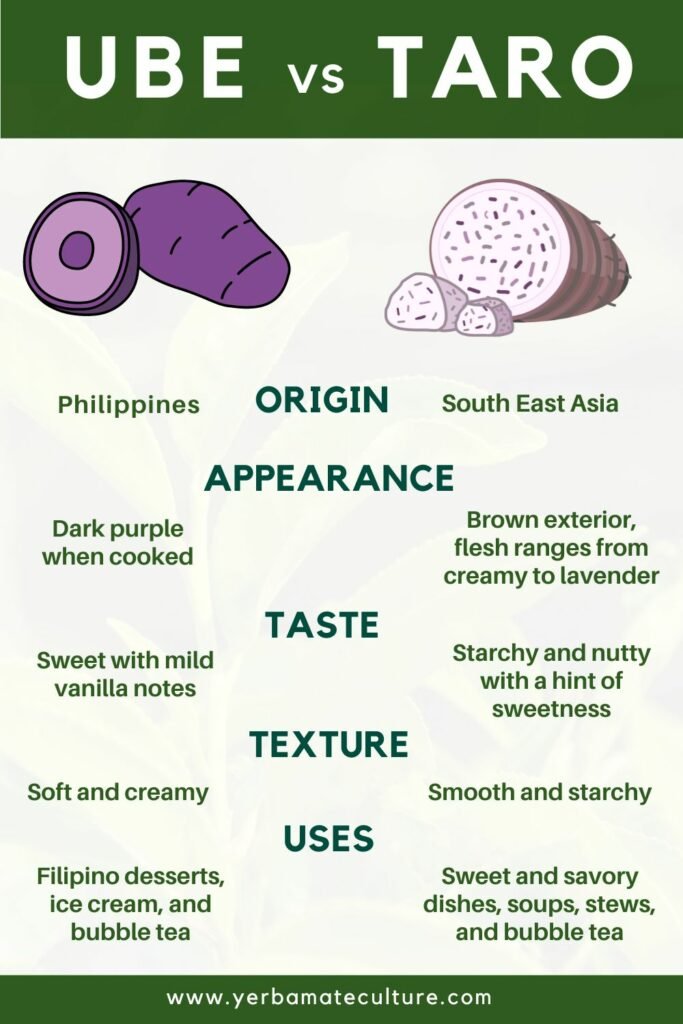
Next, take a deeper dive into ube vs taro in milk teas.
What Is Ube?
Ube is a vibrant, sweet purple yam native to Southeast Asia that is used to make richly colored desserts and drinks. In addition to being a favorite addition to boba tea, ube is commonly used to color ice cream, macaroons, frosted cakes, and more.
The violet-colored ube was made for the Instagram generation!
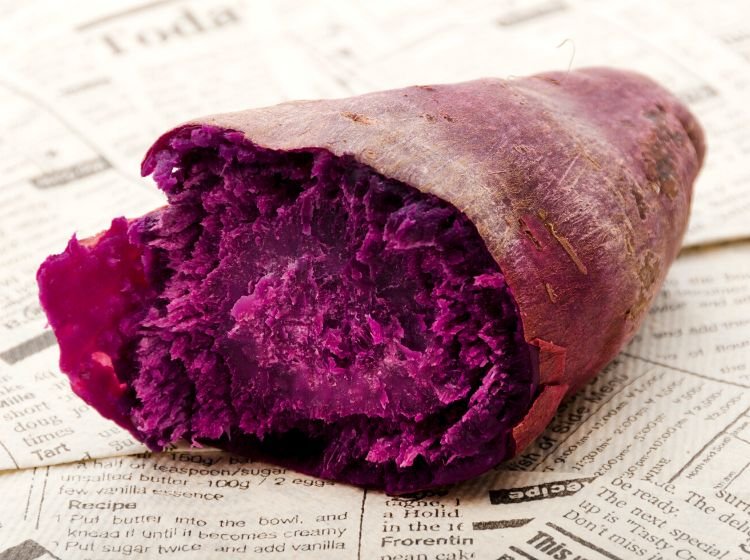
It’s amazing to think that such dramatic coloring can come from something that is essentially a root vegetable.
Ube means tuber in the Tagalog language of the Philippines. Just don’t call it a sweet potato!
Unlike flat-tasting potatoes, ube has a honey-like, vanilla-infused flavor with slight hints of nuts. The simplest way to enjoy ube in Asian culinary tradition is to boil, mash, and mix it with condensed milk to produce sweet desserts like Ube halaya, a type of Filipino jam.
While ube tastes like it was made in a sweet factory, it shares a similar profile to its sweet potato cousin. Full of vitamins and fiber, ube offers a delicious way to make desserts and treats healthier. It has quickly become the star of the tea scene.
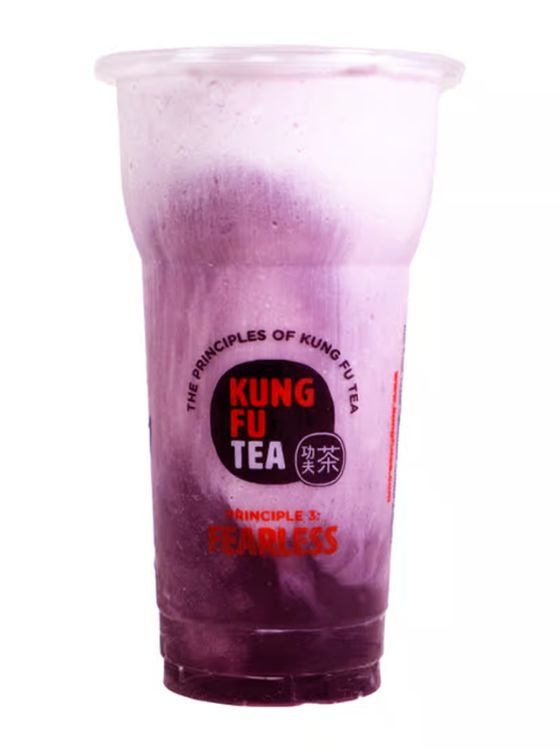
Ube can be used in boba tea in a number of different ways. Ube milk tea is usually infused with ube extract or ube paste like in the Kung Fu Tea drink above.
Another great opportunity for a first-hand experience is to get the Ube Latte at Boba Guys. It’s definitely one of the best Boba Guys drinks on the menu!
Of course, the specific recipe and method used will vary based on the tea house or coffee shop you’re visiting.
Places that serve bubble tea can use fresh ube, ube paste from concentrate, ube powder, or ube extract to achieve the classic purple color and flavor of this beloved drink.
How Does Ube Bubble Tea Taste?
Ube bubble tea has a sweet vanilla flavor. However, it has a gentle, natural sweetness that is far different from many of the sickly sweet tea and coffee drinks served at many coffee shops.
Its aromatic quality makes it taste almost medicinal.
Ube Health Benefits
Ube is a tuberous root vegetable that’s teeming with health benefits!
While sipping sweet ube tea feels like a treat, the reality is that every ounce is loaded with vitamins, minerals, and antioxidants. Ube is also packed with potassium, vitamin C, and fiber.
Ube health benefits include:
Reduced Cancer Risk: Two specific elements in purple yams called cyanidin and peonidin have actually been shown to reduce the growth of colon cancer, lung cancer, and prostate cancer.
Blood Sugar & Weight Loss: Ube may even help to regulate blood sugar in a way that aids in weight loss. A rat study found that consuming high amounts of purple yam extract lowered appetite, encouraged weight loss, and improved blood sugar control.
Blood Pressure & Immunity: Purple yams have also been shown to help reduce blood pressure, improve the immune system, and offer amounts of vitamins C and A that can prevent asthma.
Digestion: While the benefits of ube could take pages and pages to cover, there’s one more benefit that’s worth noting. Purple yams have a perfect mix of complex carbohydrates and resistant starches for aiding in healthy digestion. In a 2018 study, the starches in purple yams were shown to increase levels of good gut bacteria known to stimulate healthy bowel movements.
Additional research shows that purple yams may have an anti-inflammatory effect that helps to decrease symptoms of colitis.
What Is Taro?
Taro is a tropical root vegetable that’s believed to be one of the first crops ever cultivated by humans. It has a flavor that’s best described as a sweet potato that’s been infused with a hint of vanilla.
While taro shares some of the sweetness of ube, it has a much flatter flavor. Widely cultivated around the world this starchy root vegetable is often used in both sweet and savory dishes.
Taro can be added to milk teas in either a fresh or powdered form.
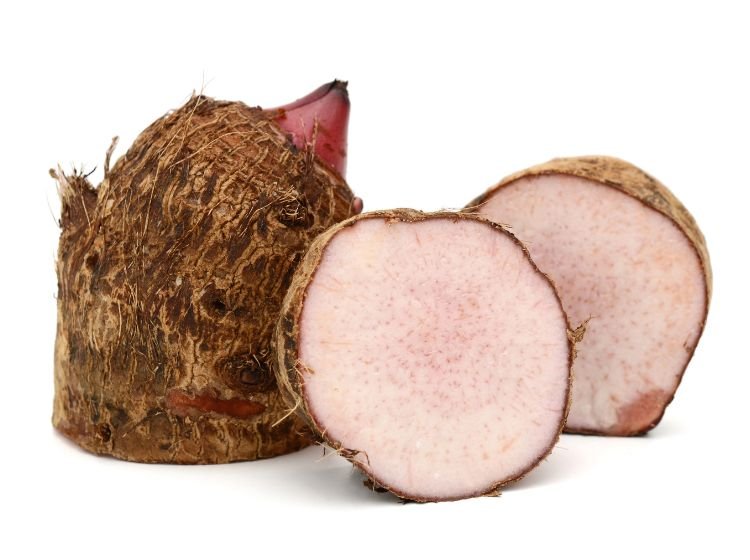
How Does Taro Bubble Tea Taste?
Taro milk tea taste is a combination of nutty and slightly starchy flavors. While the sweet flavor profile is present, you can definitely get a sense of the earthy undertones coming through from this root vegetable.
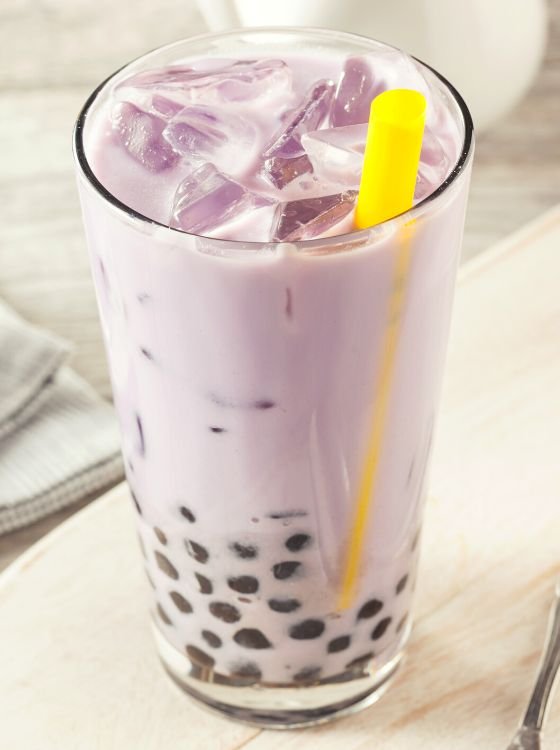
The color of taro is almost as fun as the flavor it brings to bubble tea. Unlike strictly purple ube, taro can come in white, pink, or purple tones. It often looks like a combination of rose and lavender tea when served.
Taro-flavored bubble teas are among the best sellers in Coco Fresh Tea & Juice and many other boba shops.
Taro Health Benefits
Taro is a high-fiber root vegetable that offers health benefits tied to everything from cancer prevention to digestion. Like ube, it contains resistant starch that can help to naturally balance blood sugar and reduce weight.
Taro health benefits include:
Heart Health: In studies, taro’s abundant resist starch has also been linked with reduced risk for heart disease.
Anti-Cancer Properties: Taro may also have strong cancer-fighting properties. A specific polyphenol found in taro root called quercetin has been found to both kill and slow down the spread of cancer cells. A study from 2012 found that taro was specifically useful for stopping the spread of breast and prostate cancer cells in non-human cases.
Blood Sugar: The combination of resistant starch and fiber can help with balancing blood sugar making it a good option for people with diabetes. Avoiding blood sugar spikes also helps with controlling appetite and can promote weight loss.
Reduced Risk of Heart Disease: The high amount of fiber and resistant starch can also help with lowering cholesterol and reducing your risk of heart disease.
Digestion: Similar to ube, the fiber and starch in taro promote healthy gut bacteria and improve colon health.
Ube vs. Taro – What Are the Differences?
Here’s a look at what makes these two popular bubble tea ingredients different:
- Taste: Ube is the sweeter of the two. It has a honey-meets-vanilla essence that gives bubble tea a strong dessert-like quality. While taro also has sweet notes, it has a nuttier, earthier taste.
- Color: Ube is famed for its vivid, cosmic purple hue. Taro can also be purple. However, its shades range from lavender to white.
- Calories: Both have comparable caloric amounts. A cup of taro contains 187 calories while a cup of ube contains 140 calories. One important thing to know is that the higher fiber content of taro can make it slightly better for digestion.
- Benefits: The health benefits of ube and taro are very similar.
While there are some differences, we can see that these two root vegetables are similar in many ways.
So which one is healthier?
Both contain complex starches that are known to help balance blood sugar. While this is an interesting find for people suffering from conditions tied to insulin resistance, anyone who wants to lose weight may benefit from adding taro and ube to their diets.
Ube’s strong probiotic properties could make it the better choice if you’re dealing with gut or digestive issues that you believe are caused by bacterial imbalances.
Lastly, both root vegetables may offer some anti-cancer properties. While the benefits are pretty even, taro may be a little more promising when it comes specifically to breast and colon cancers.
Conclusion – Differences Between Ube and Taro Bubble Tea
Let’s call these two bubble teas cousins. When you want purple boba tea, you can have it made with either ingredient — or both!
While many people think they are interchangeable due to their similar coloring, the choice comes down to sweet versus less sweet.
Ube is my recommended pick if you want bubble tea with the essence of a vanilla dessert. Taro is the choice if you want something a little more subdued.
I recommend that you try both options to find your favorite!
Save on Pinterest:
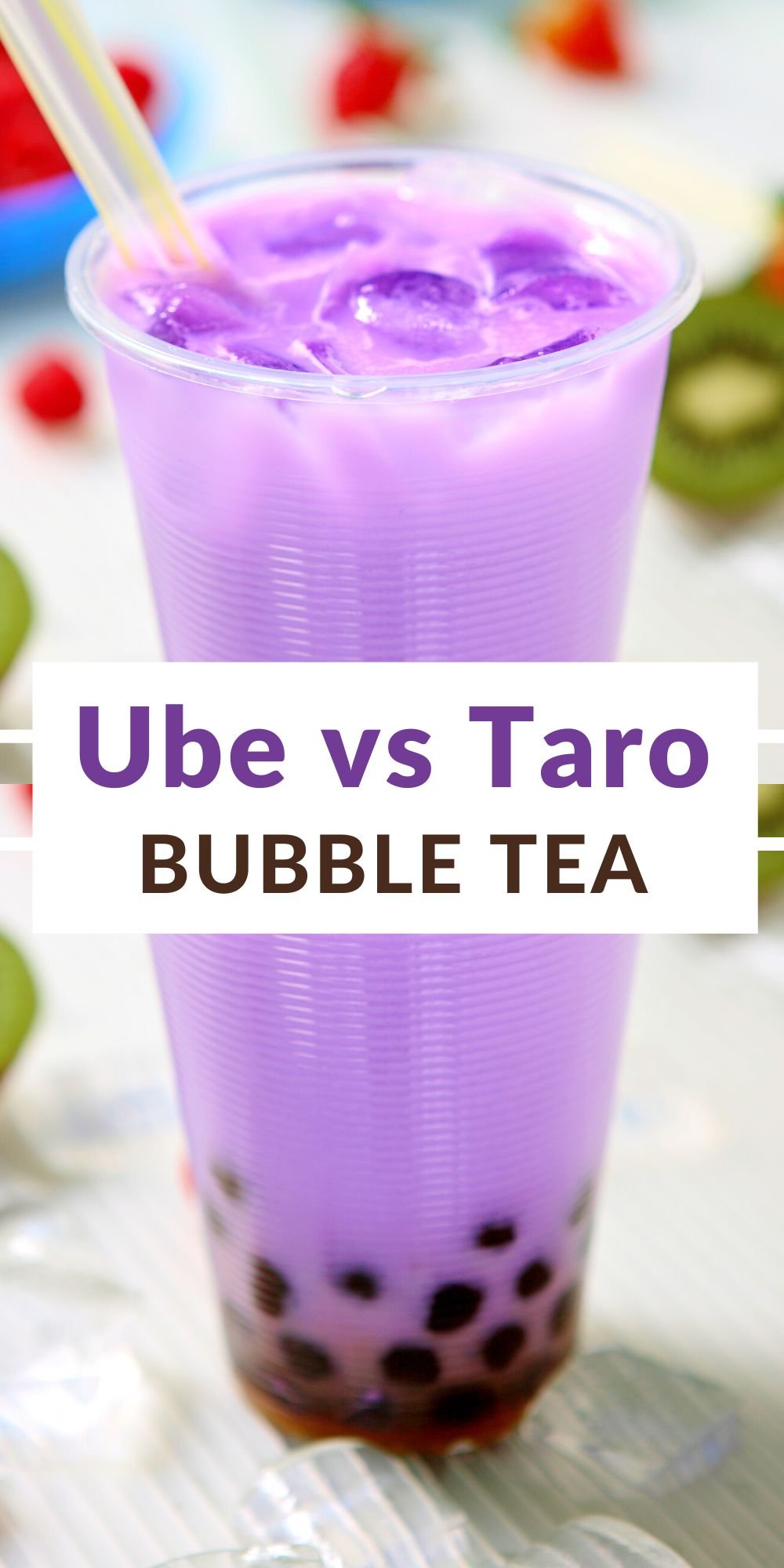

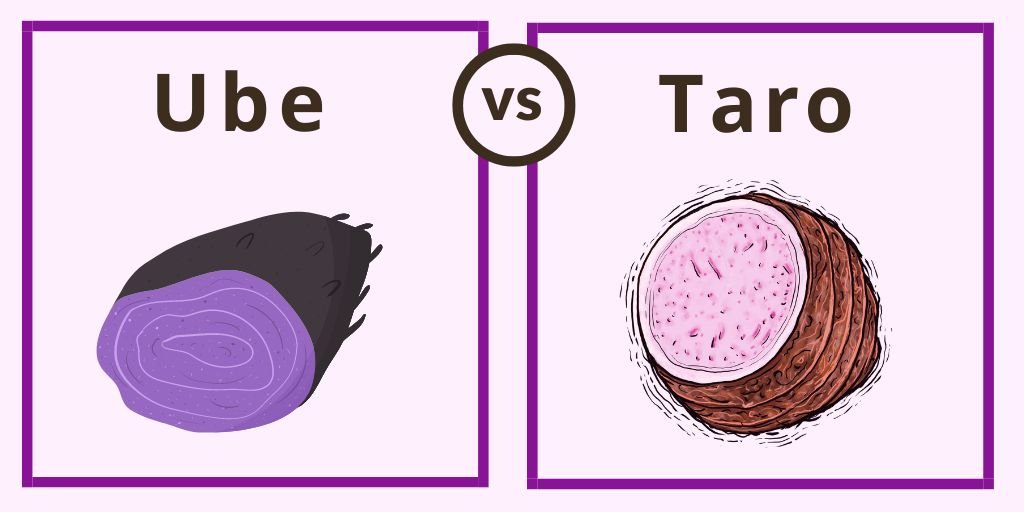
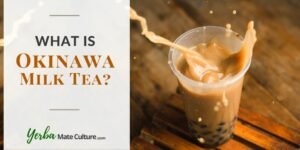
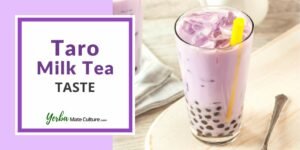
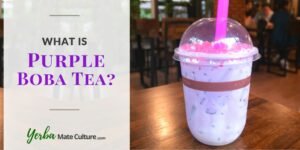
![Top 10 Best Boba Tea Places in Phoenix [2023] Best Boba in Phoenix](https://yerbamateculture.b-cdn.net/wp-content/uploads/2023/01/Best-Boba-in-Phoenix-300x150.jpg)